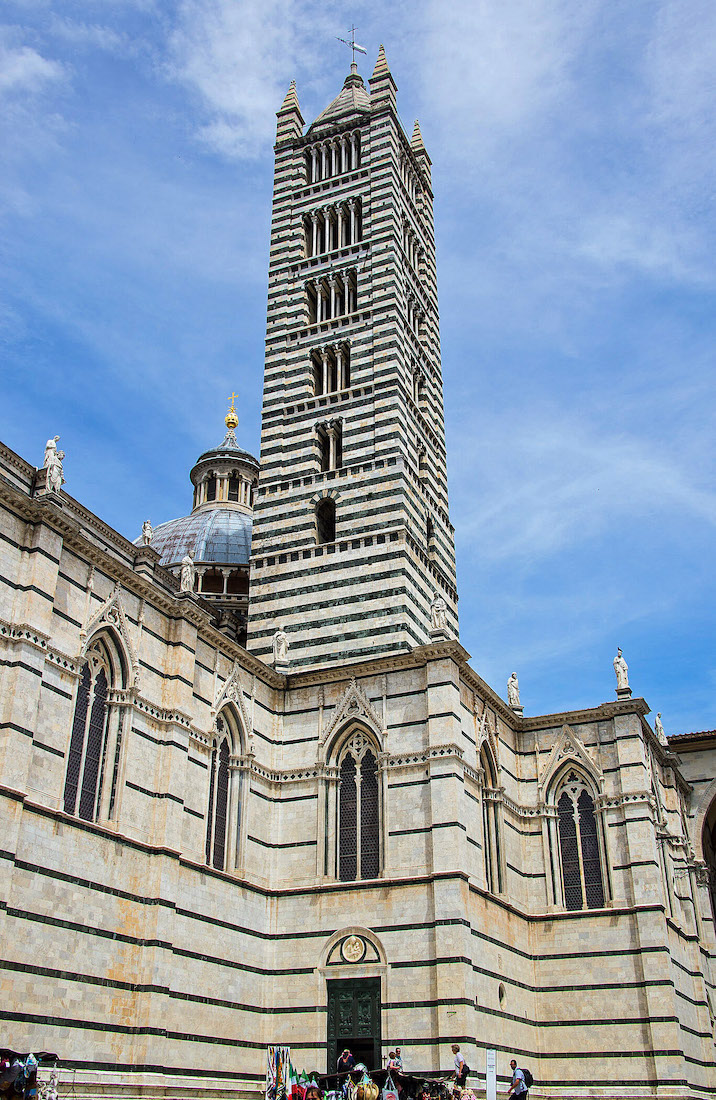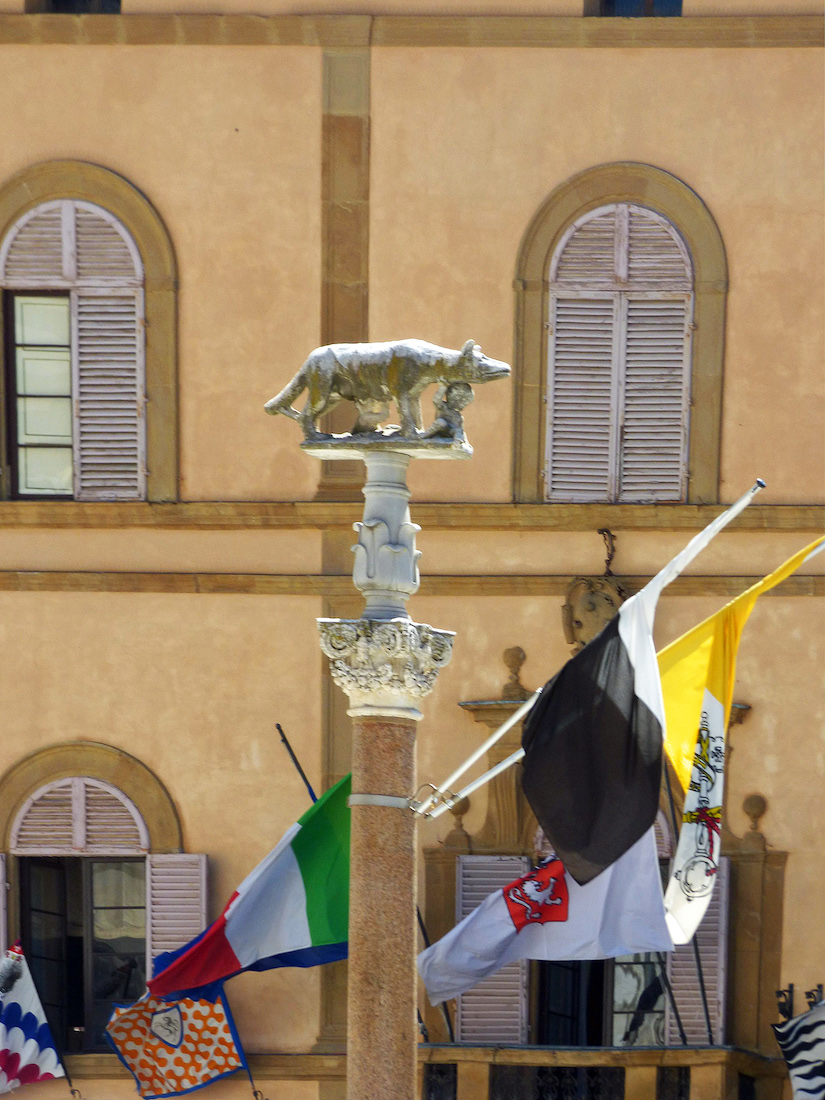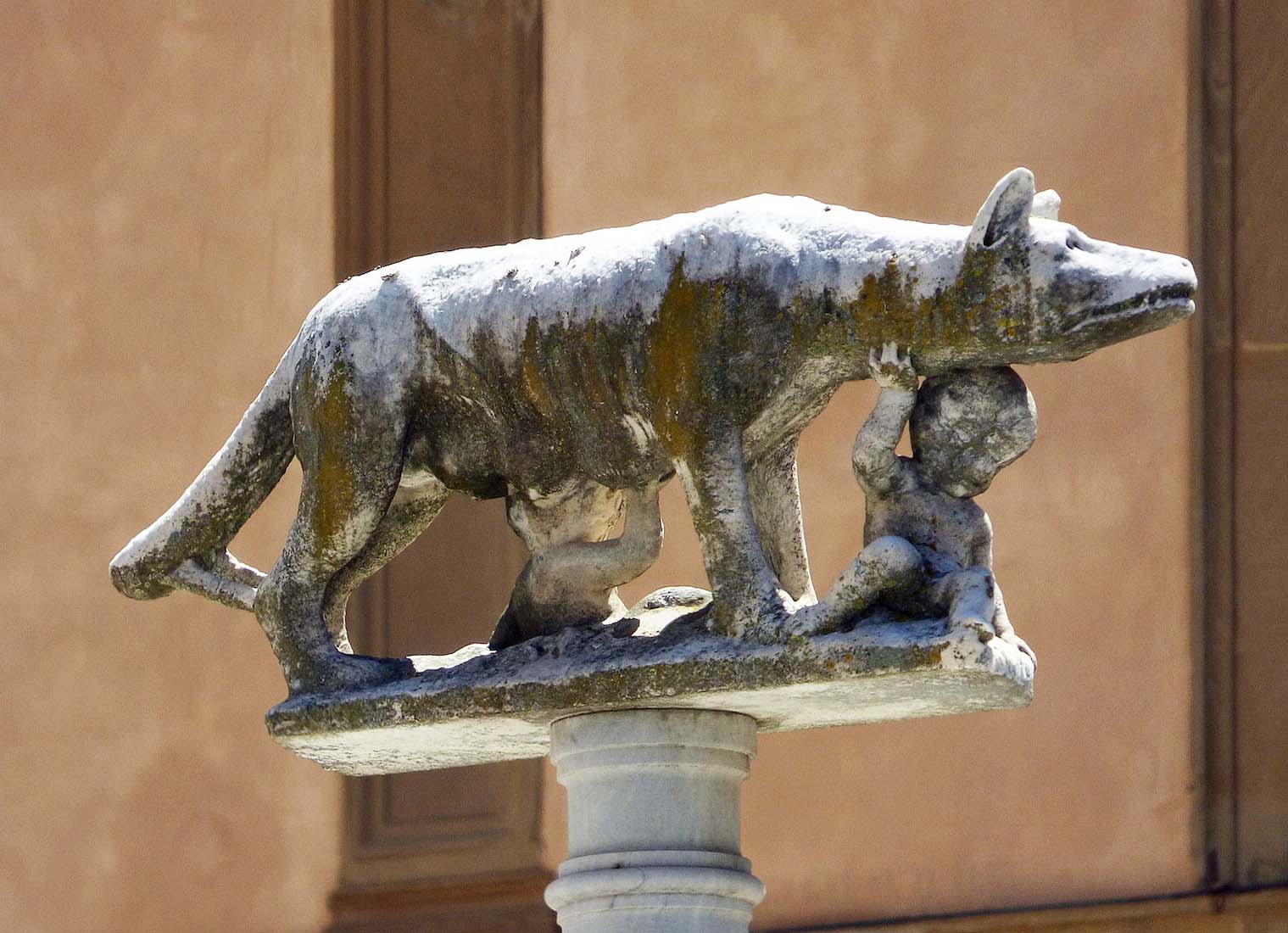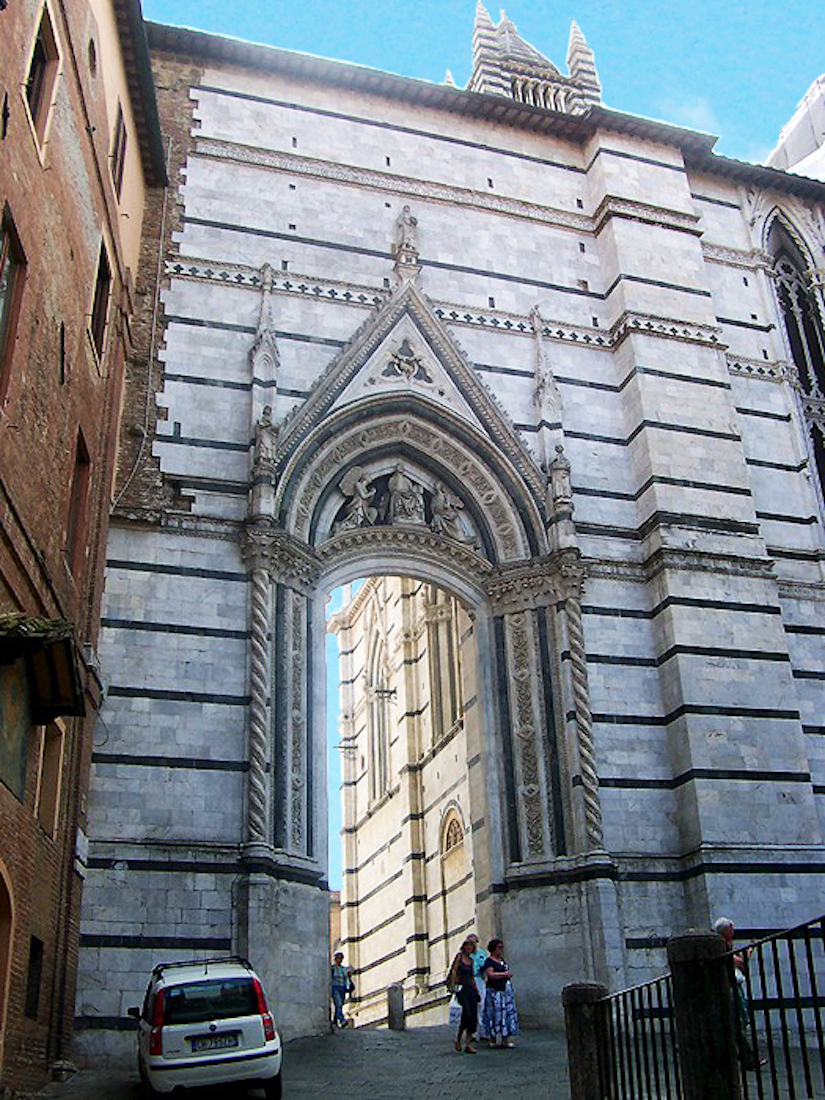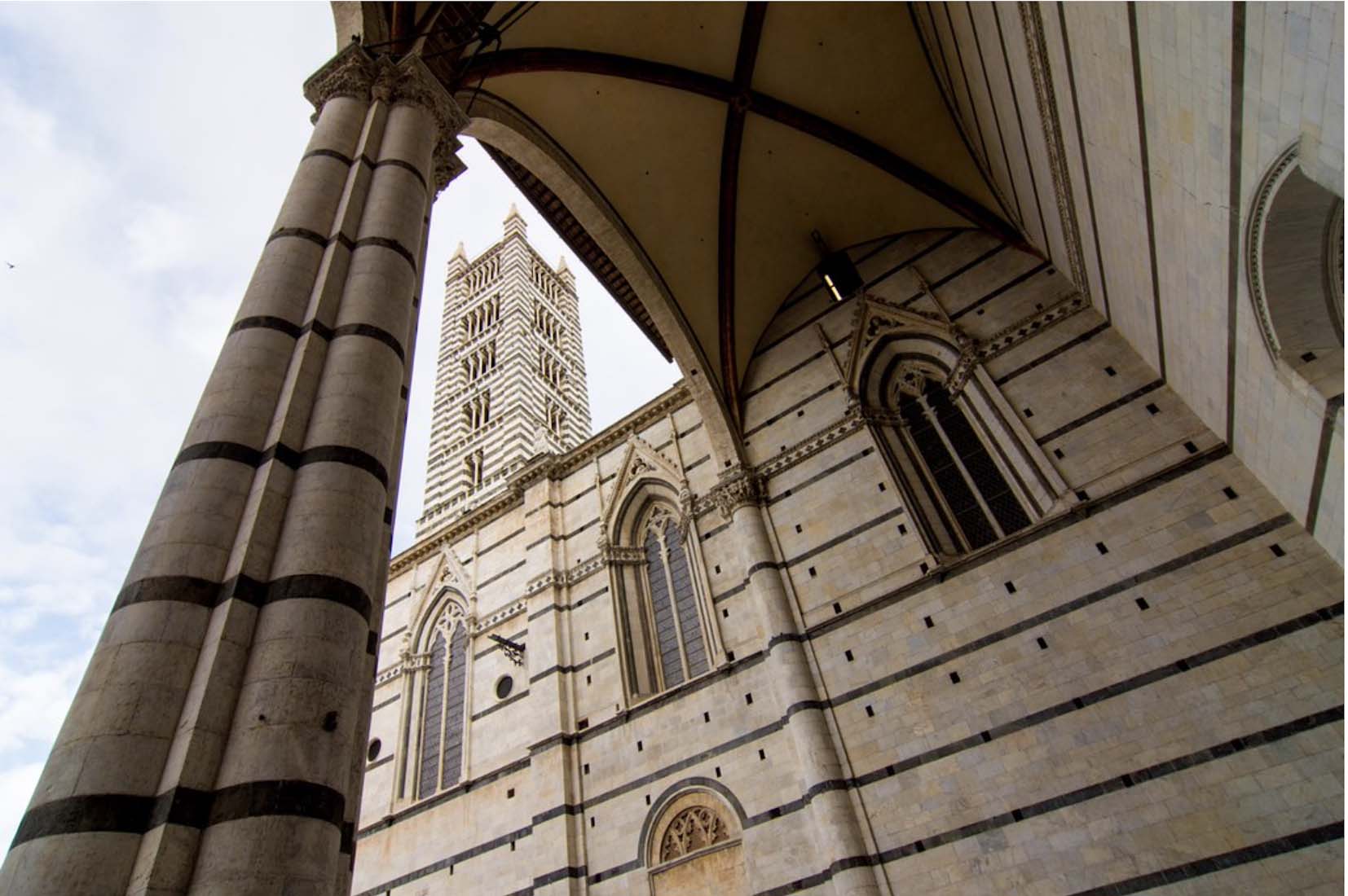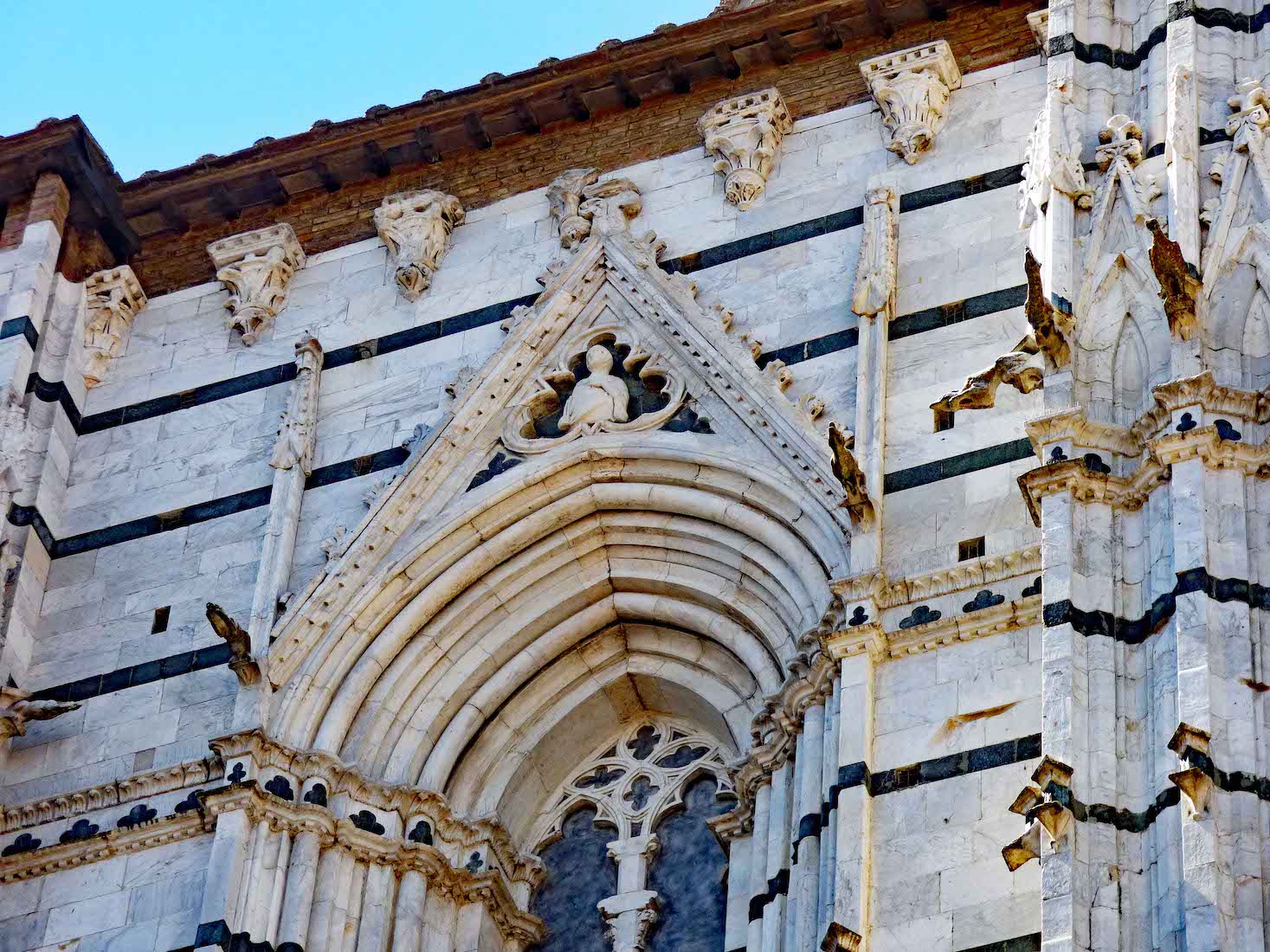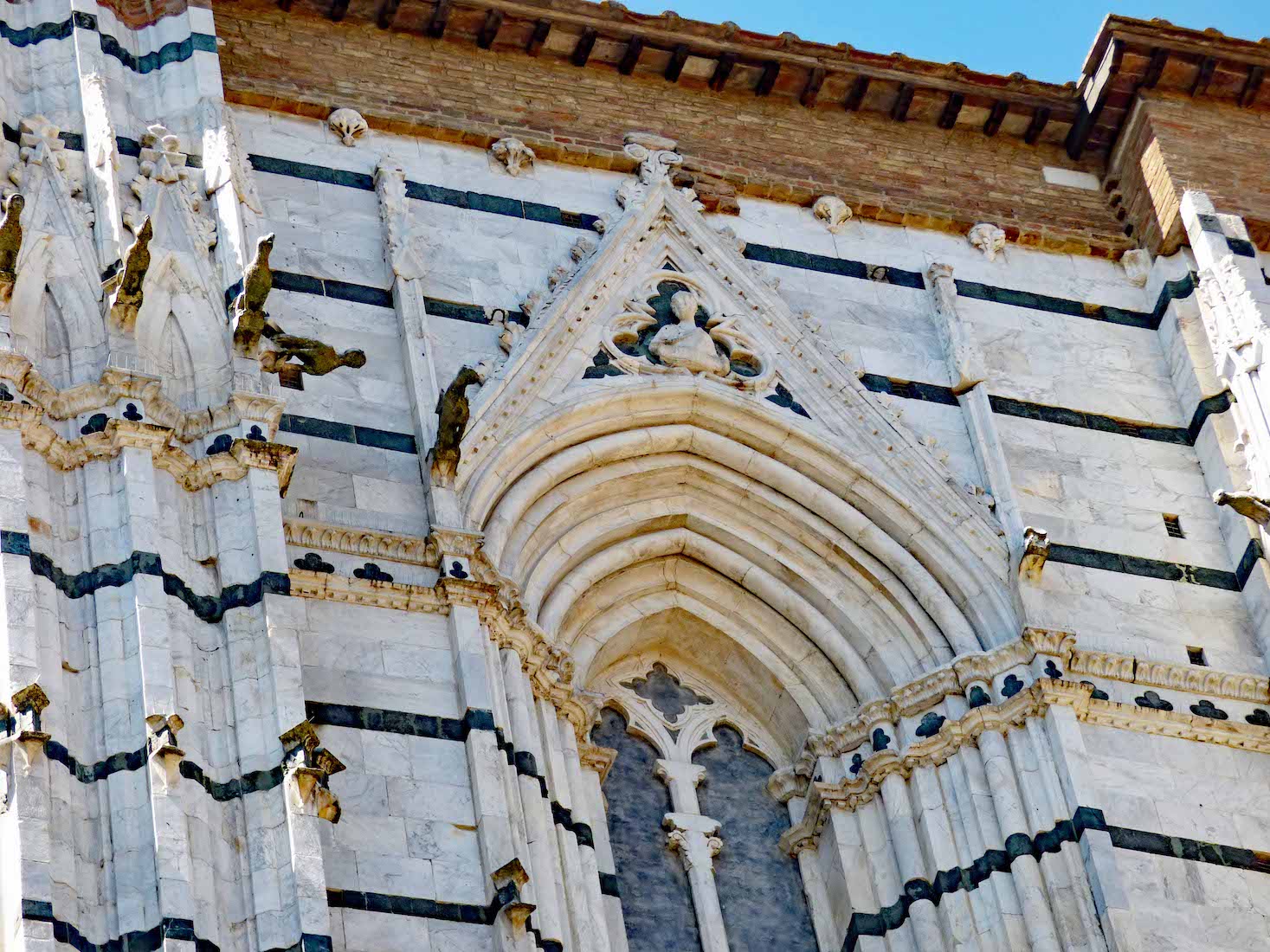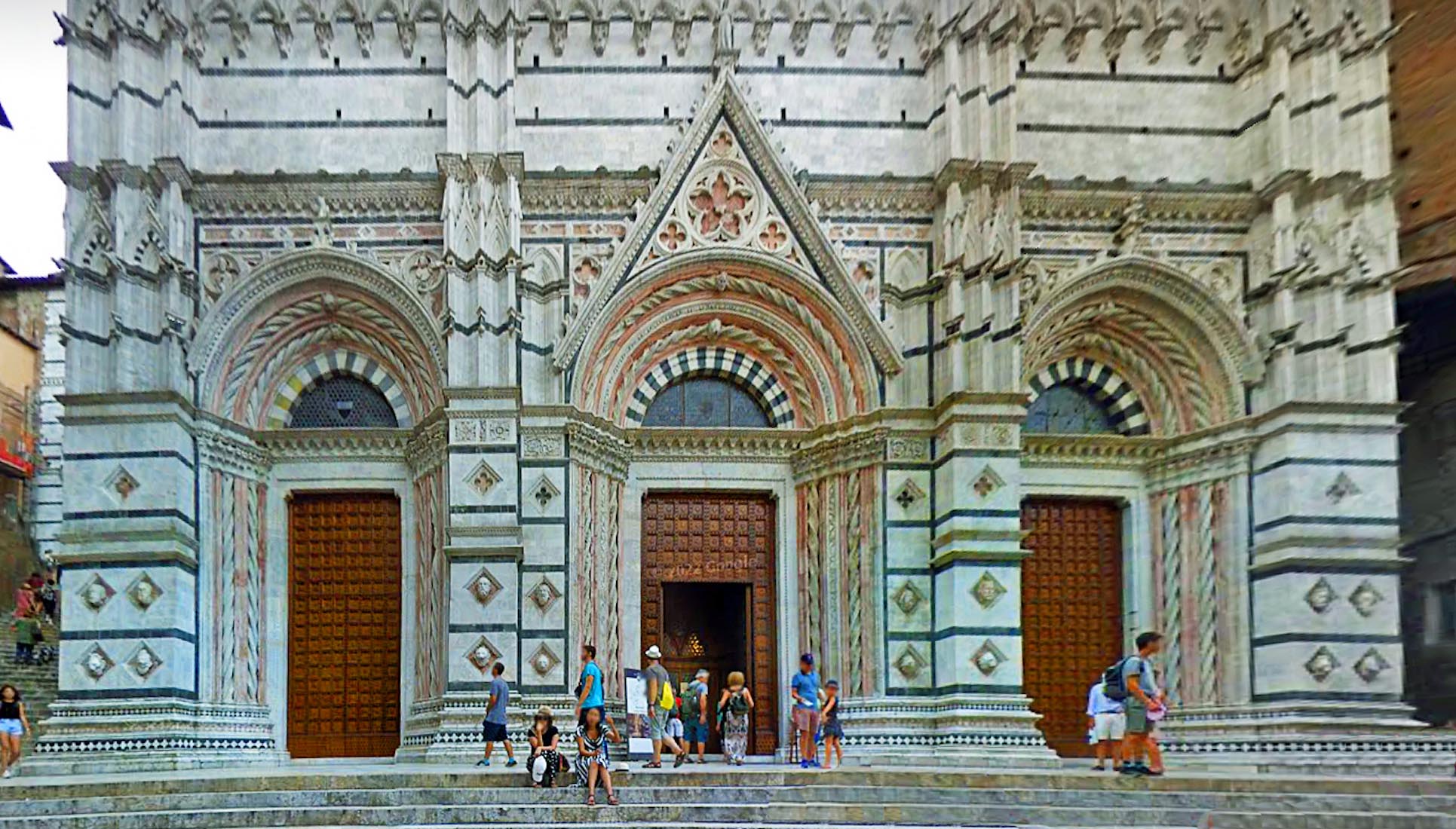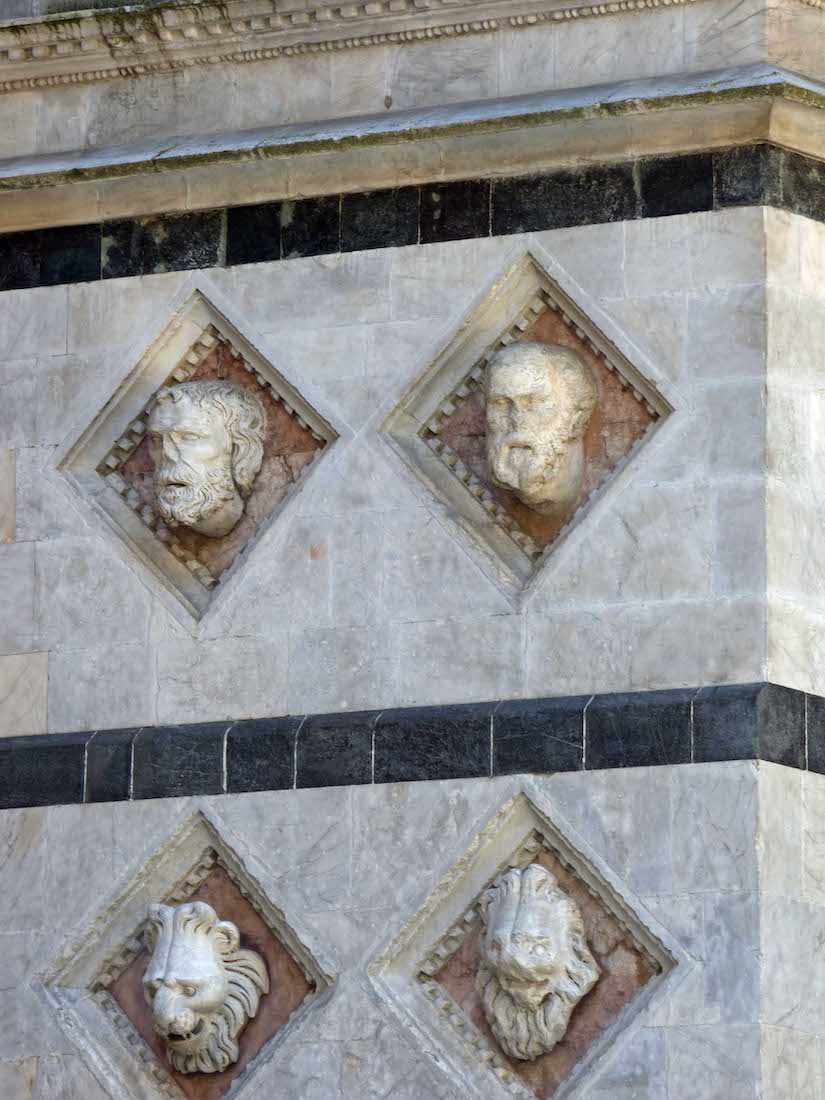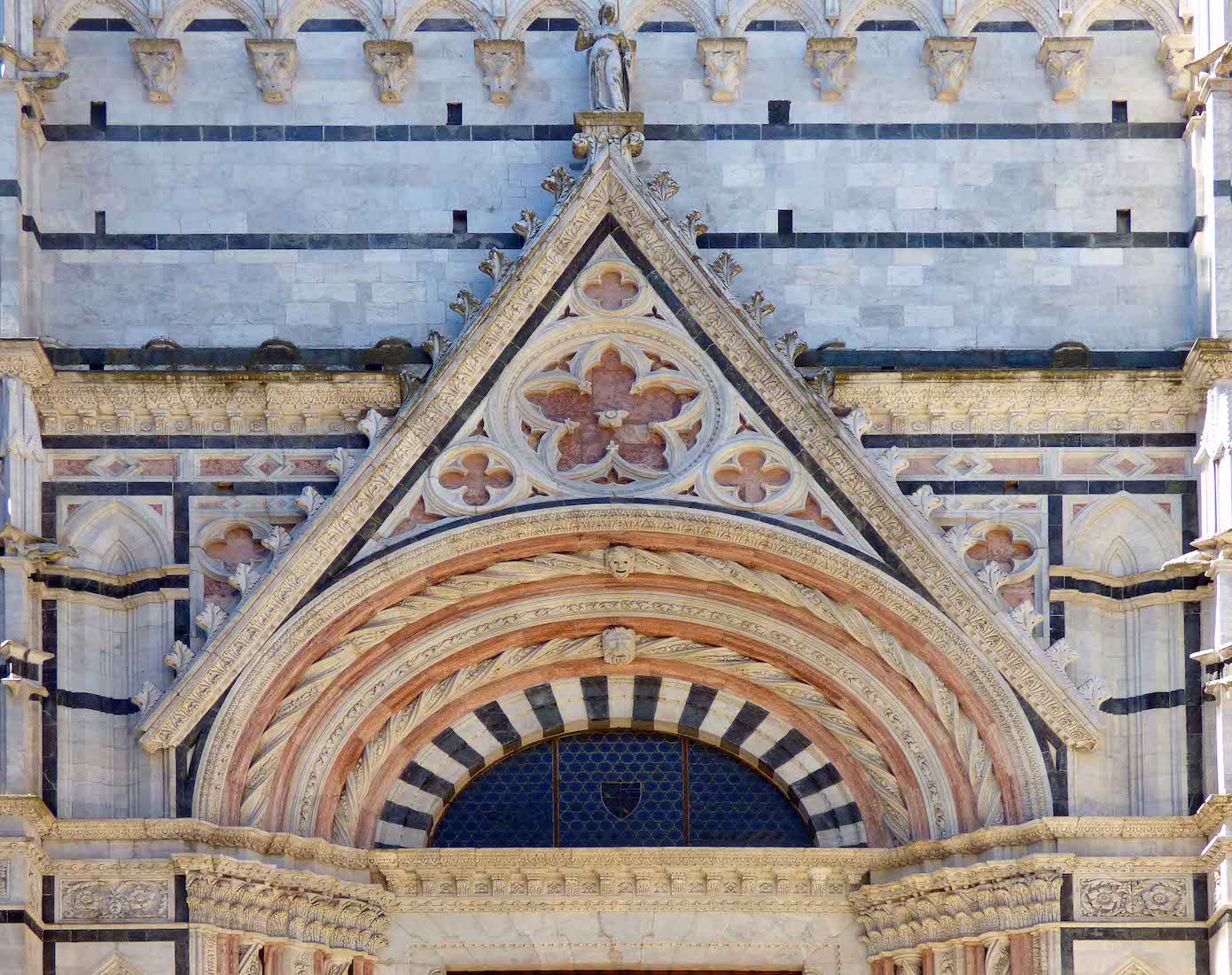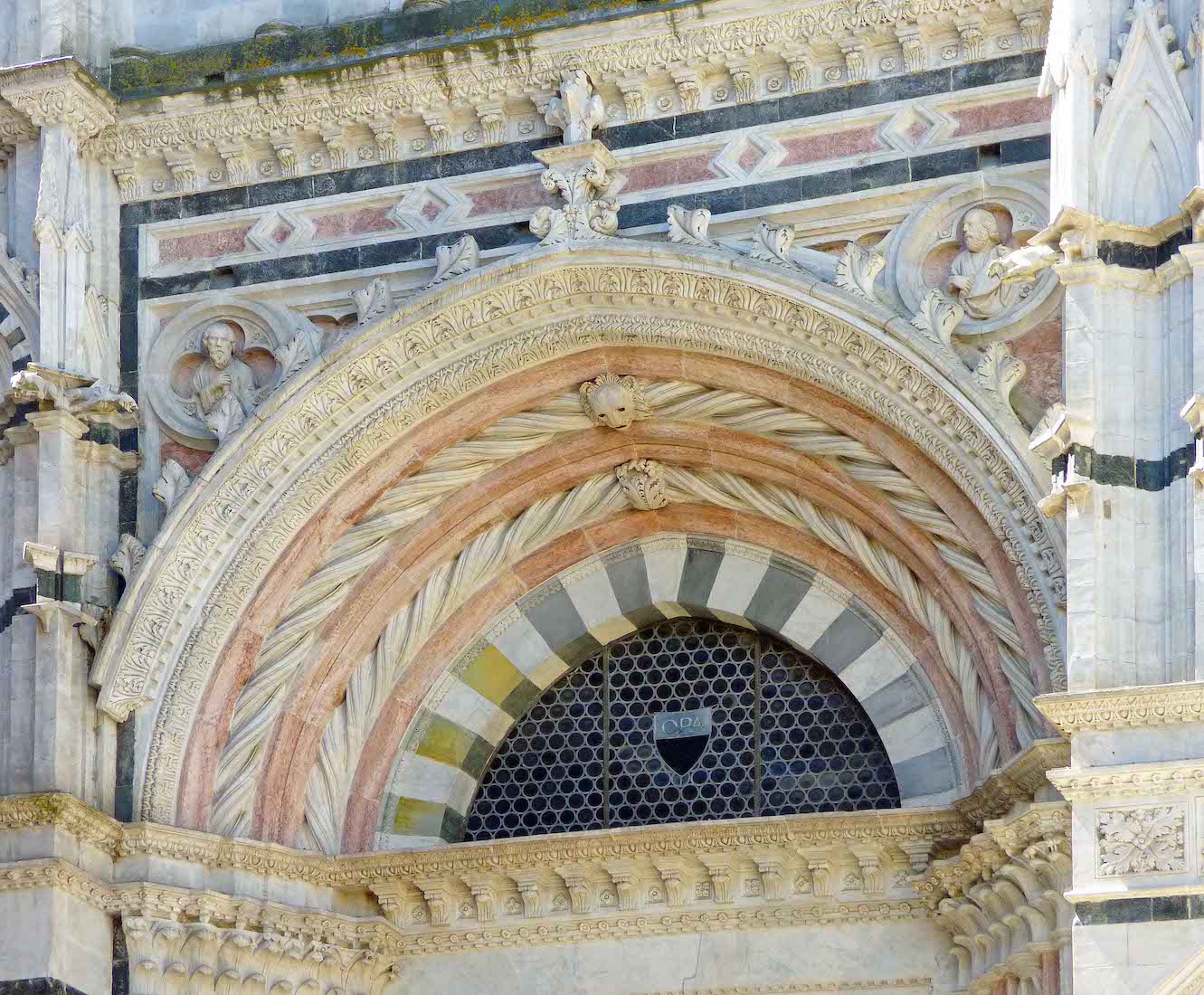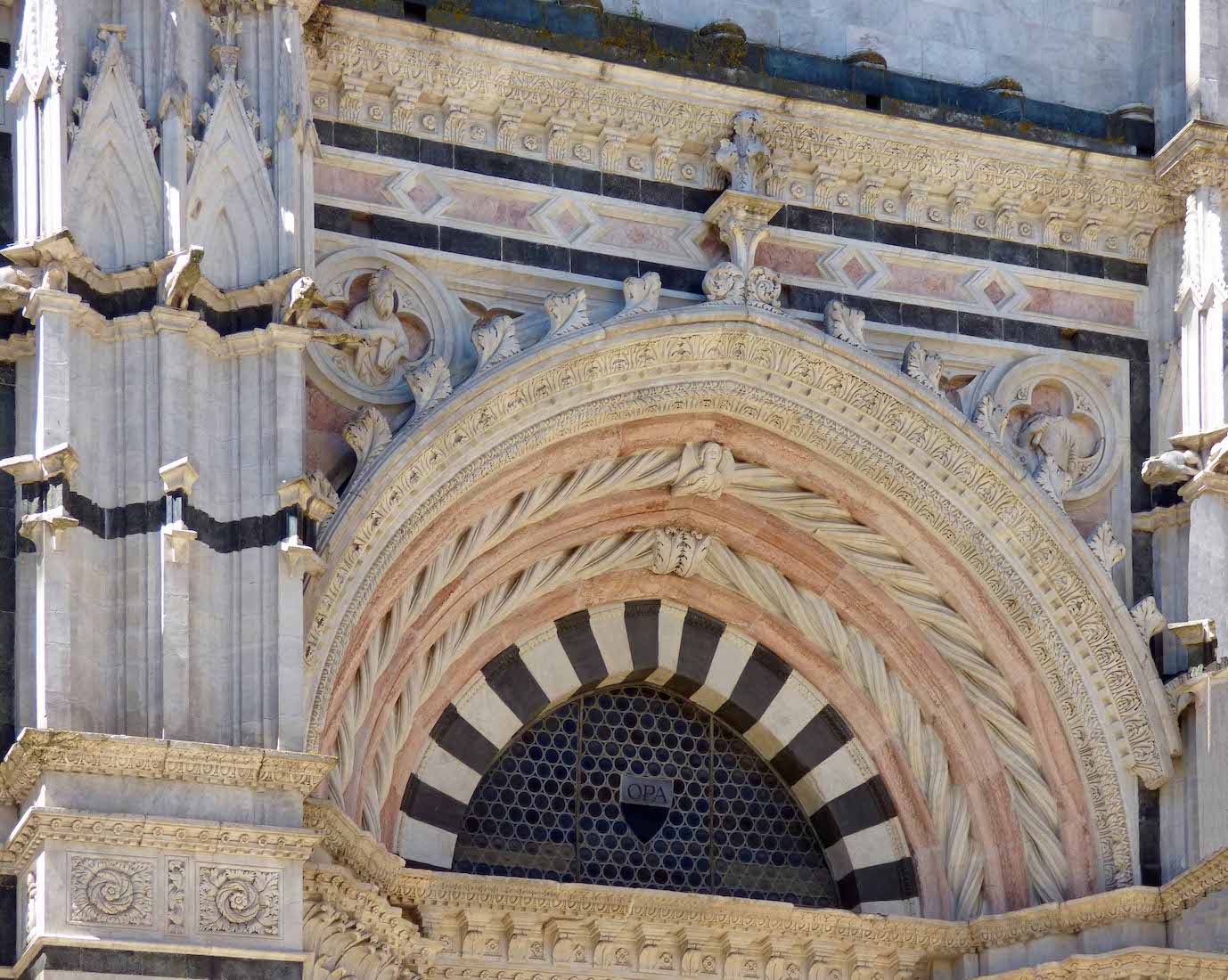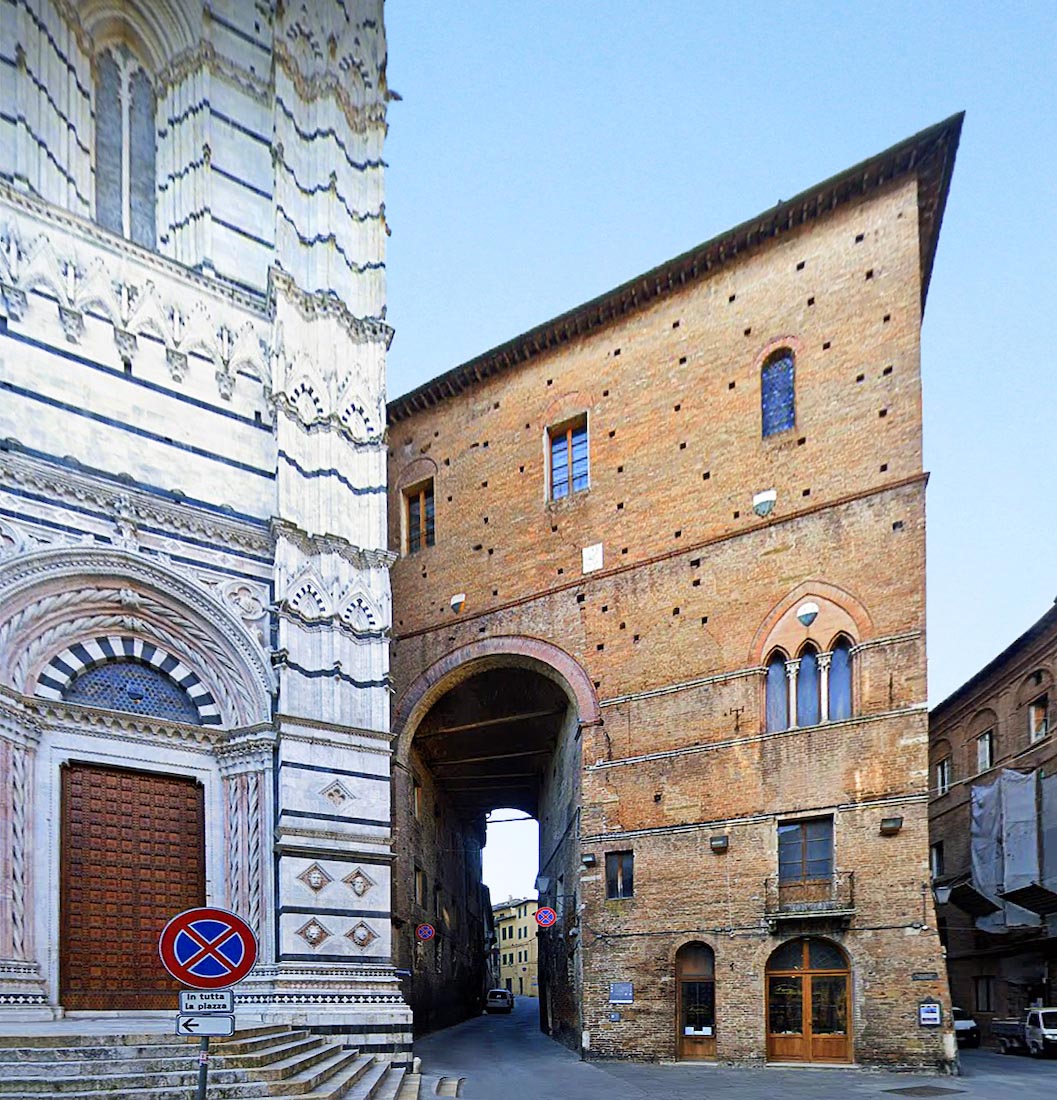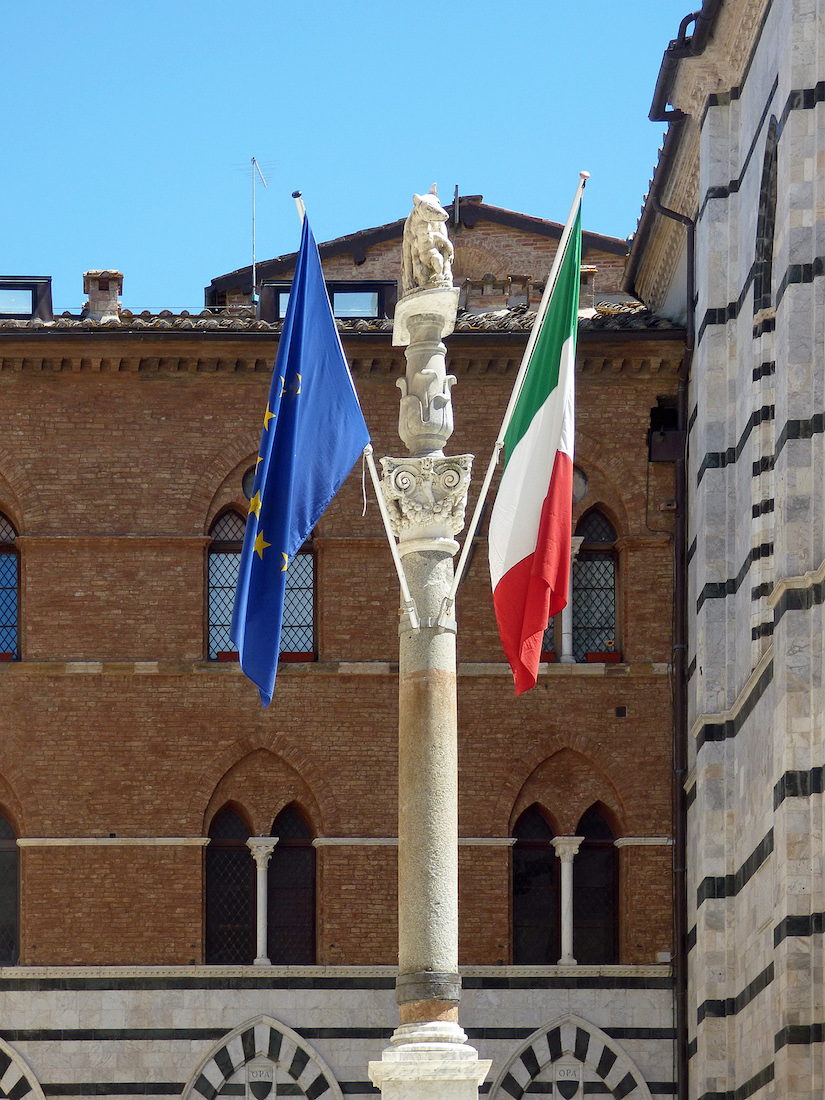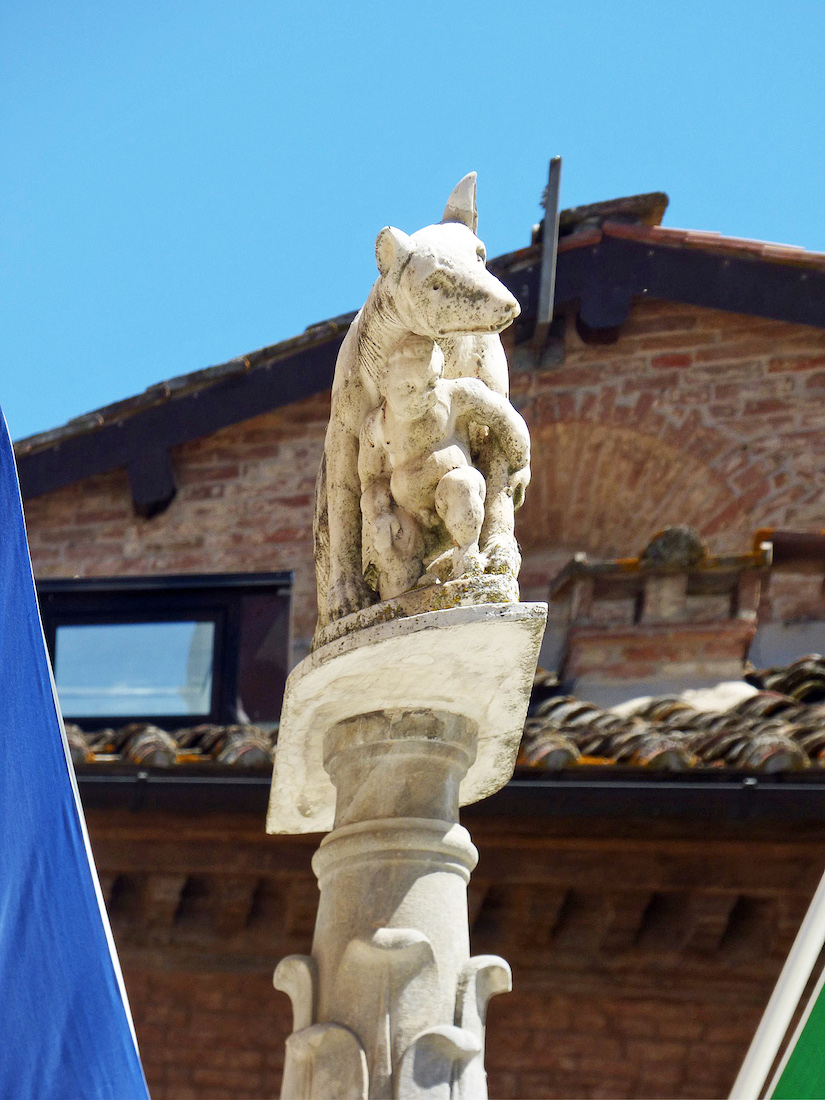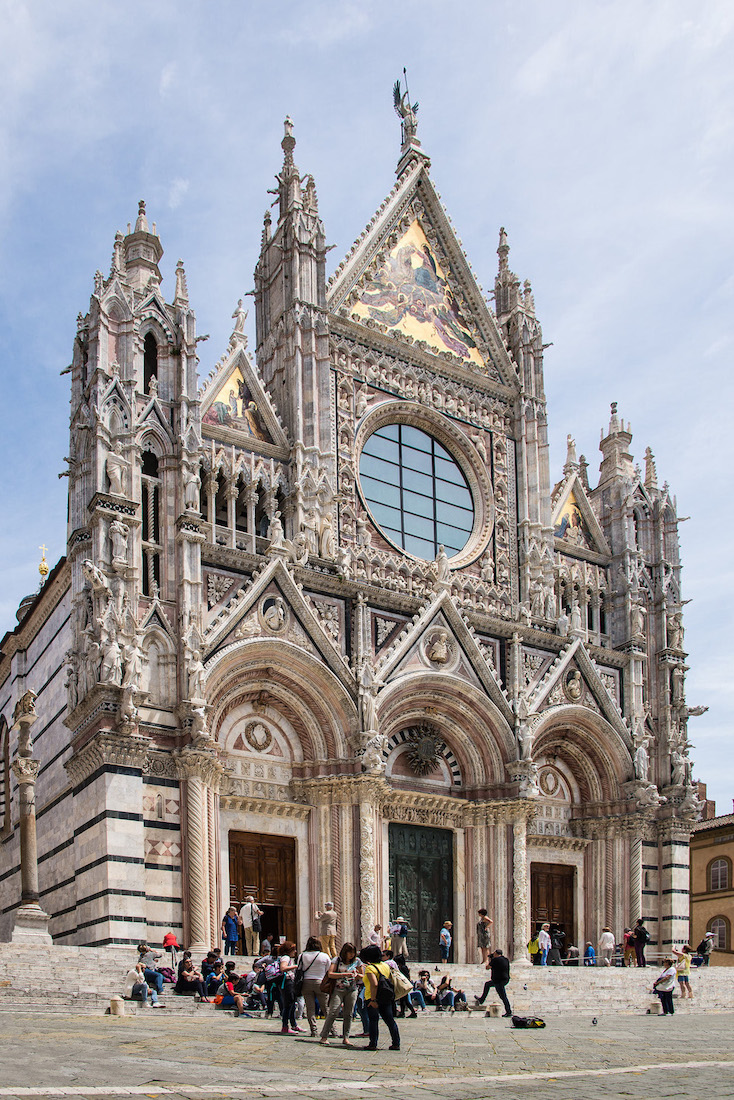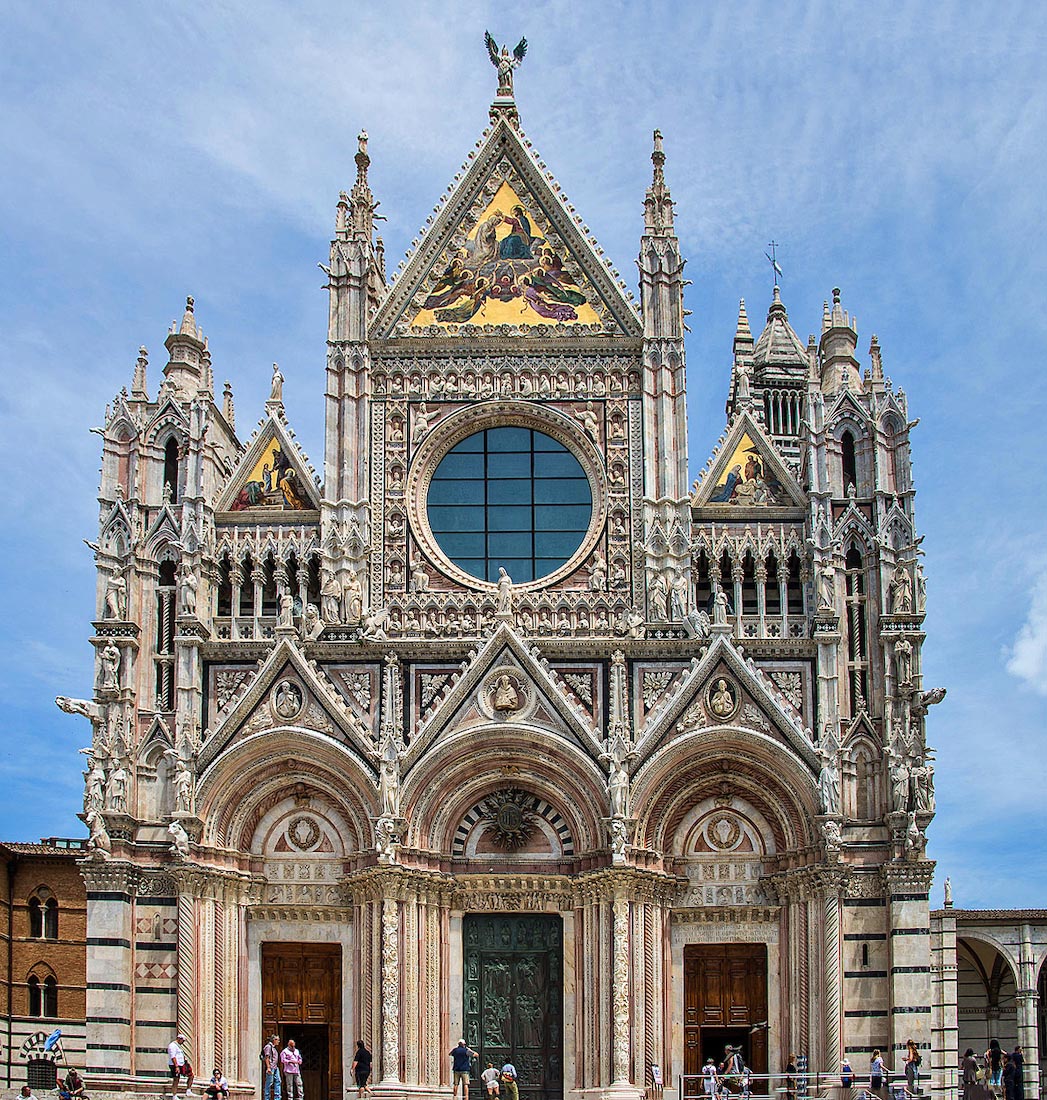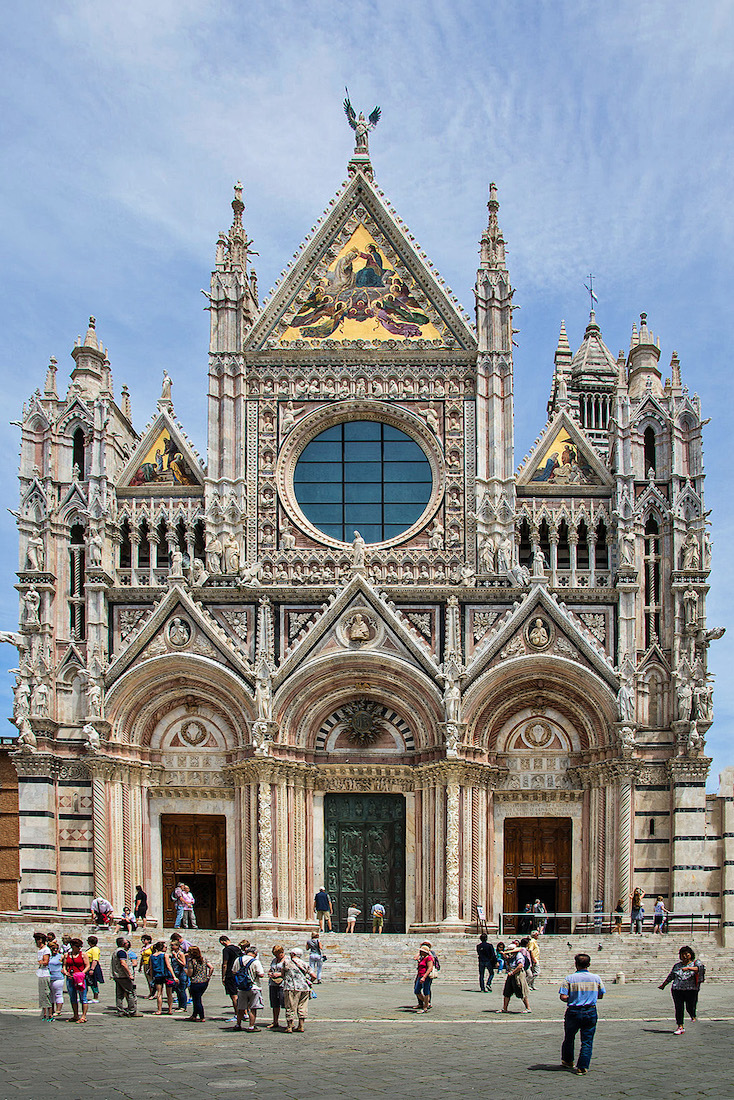
Siena is a city set in the beautiful Tuscan countryside. Seen from a distance it appears as a cluster of brown buildings packed together on a hill. On the skyline we are likely to see the silhouettes of the tower, the Torre del Mangia , and the dome and bell tower of Siena Cathedral. Looking more closely we find that the Cathedral, dedicated to the Assumption of Mary, is located in an open paved space, the Piazza del Duomo. The West face is breathtakingly beautiful. We shall return to look more closely at this, but, as is our custom, we will try to walk right around this amazing building. INDEX
A2. WALKING TO THE SOUTH LM
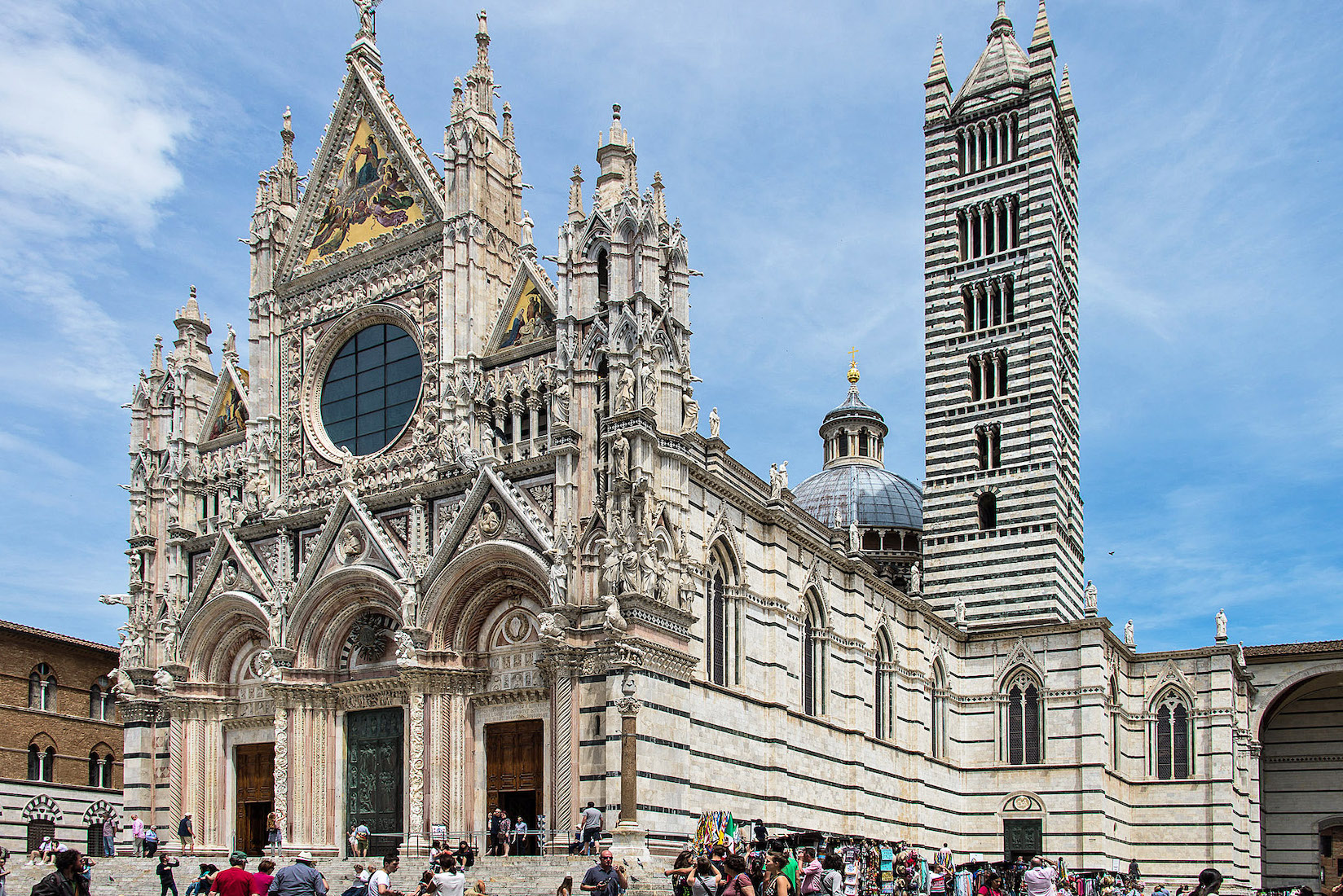
The Cathedral was designed and completed between 1215 and 1263. As we walk to the South we become aware of the central dome, with its lantern, and topped by a golden orb and cross. We notice too the white and greenish-black marble in alternating stripes: we shall find this to be a feature inside the Cathedral as well. The outside wall is strengthened by small buttresses, each of which is topped by a statue of a clerical figure – too distant to identify! Then of course there is the bell tower ...
A3. THE BELL TOWER LM
The bell tower, or campanile, of the Cathedral was constructed in around 1312, some years after the Cathedral was built. It is 77 metres high, and contains six bells, the oldest cast in 1149. The windows show that the campanile is six storeys high! The tower has a cross and weather vane at the top. Although it must be possible to climb this tower, access does not seem to be available to the general public.
A4. ENJOYING THE DETAIL WC
It looks as though our circumnavigation of this Cathedral may be blocked by a wall and arches extending from the South transept, but we shall find a way! First we notice the round column standing at the corner of the steps. [Photo Credit: Nikolai Karaneschev]
A5. COLUMN OF THE SHE-WOLF EB EB
A striking feature of the Piazza del Duomo is the Column of the She-Wolf. According to legend, the sons of Remus were the original founders of Siena. Romulus and Remus, born of a she-wolf had founded Rome, but when Romulus killed Remus his sons feared for their lives and fled the city. As they left Rome, the sons Senius and Aschius stole the statue of the She-Wolf from Apollo’s Temple. Their hasty journey brought them to the hill of Castelvecchio where they founded the ancient city of Sena (named after Senius). While becoming a symbol of the new city, the she-wolf was also a permanent reminder of their origins. The legend goes on to say that Senius was riding a white horse and Aschius a black one, giving the city its symbolic black and white colors.
A6. A RUINED NAVE LM
In the 14th century, when the Sienese found out that their rival city-state (Florence) had a cathedral that was bigger than theirs, they tried to make a bigger one. Instead of demolishing their old cathedral, they decided to turn its nave into the transept, and extend an even larger nave off the South transept, and perpendicular to the existing church. Expansion got underway in 1339 but in 1348, the Black Death swept through the city and killed 4/5 of Siena’s population. The giant cathedral was never completed, and the half-finished walls of the Duomo Nuovo (New Cathedral) survive as a monument to Siena’s ambition and one-time wealth. It is possible to climb to the top of the Facciatone – the unfinished facade of the ‘New Cathedral’.
A7. ARCHWAY WC
We are pleased to discover an open archway through the side wall of the ruined nave, set in a striped wall and finely decorated. This was designed to be a portal for the ‘New Cathedral’. Just to the right here is the entrance to the Cathedral crypt. The crypt has its own incredible story, and we shall visit it later. [Photo Credit: MarkusMark]
A8. LOOKING UP TO THE TOWER HJD
Looking back from the arch we catch this dramatic view of the campanile. [Photo Credit: Hans Jan Dürr]
A9. STEPS! WC
To reach the East end of the Cathedral we are faced with this steep flight of steps. Sloping access is available on the North side of the Cathedral. [Photo Credit: Markusmark]
A10. EAST FACE GM
At the bottom of the steps we reach a small piazza, and doors leading to this lower level of the Cathedral – the Baptistry of St John. This wall is less ornate than the West wall, but there is much interesting detail here. [Photo Credit: Taken from Street View]
A11. TOP WINDOWS EB EB
A weathered figure sits above each of the high windows, and the wall is decorated with various grotesques, including a number of birds? There is also a curious layer of brown bricks just below the roof line.
A12. LOWER EAST WALL GM
There are three doors through to the Baptistry. The door recesses are lines with finely carved spiral columns, carried through to the semicircular arches above. To the sides of the arches are various carved heads set in diagonal square apertures. [Photo Credit: Photo taken from Street View]
A13. HEADS EB EB
The heads – men above, lions below – have stood the test of time very well. Little information is available about this wall: most commentators stop at the West wall!
A14. DETAILED CARVING EB EB EB
The carving of these door surrounds is quite exquisite in its detail. The little shields bear the letters ‘OPA’. This acronym is an encouragement to pray, standing for the Latin ‘Ora Pro Animis’, meaning ‘Pray for Souls’.
A15. TO THE NORTH SIDE GM
At the Northeast corner of the Cathedral there is a strange abutting building. Through the arches, roads lead us up to the West end of the Cathedral. According to the plan, some parts at least of this building are used as a sacristy. However, even the road closest to the Cathedral leads us away from the actual Cathedral building. [Photo Credit: Taken from Street View]
A16. THE NORTHWEST CORNER EB
We emerge at the Northwest corner of the Cathedral. There is a brilliant display of flags, but our attention is drawn to the column – very much like the she-wolf column we saw earlier.
A17. ANOTHER COLUMN EB EB
This is another column representing Romulus and Remus being breast-fed by the Capitoline wolf. The two statues are distinctly different.
A18. APPRECIATING THE WEST FACE LM
The façade of Siena Cathedral is one of the most fascinating in all of Italy and certainly one of the most impressive features in Siena. Acting as the main entryway to the Cathedral proper, it boasts three portals; the central one is capped by a bronze-work sun. Built in two stages and combining elements of French Gothic, Tuscan Romanesque architecture, and Classical architecture, the west façade is a beautiful example of Sienese workmanship. Work began on the lower part around 1284. Built using polychrome marble, the work was overseen by Giovanni Pisano. From here the history gets complicated, but scholars agree that work on the upper facade was finished between 1360 and 1370.
A19. WEST FACE LM
The lower part of the facade has three portals, topped with pediments. In the middle portal, is the sun. Above the portals is a beautiful rose window showing The Last Supper. The entire facade is decorated with sculptures carved by Giovanni Pisano — saints, beasties, oxen, gargoyles, and the like. There are 35 statues of prophets grouped around the Virgin Mary. The originals were moved into the Cathedral museum in 1869 and replaced by copies.
A20. ANGEL EB
The unanimous opinion of many photographers is that this top figure is a stone winged angel with unfurled wings and a spear – suggesting that his actual identity is unknown.


